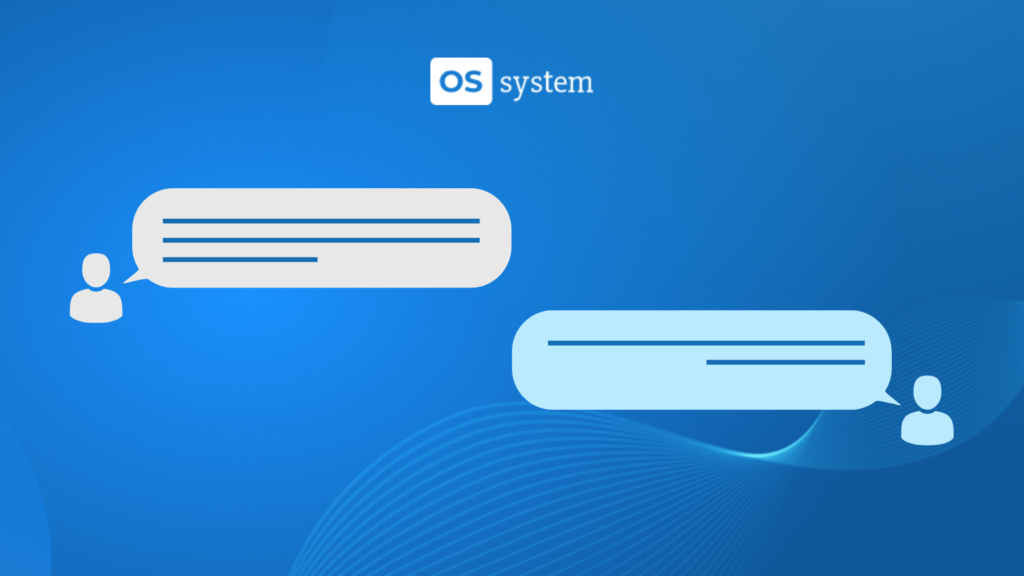Project Estimating: What is it and where to begin
Anything you do, whether buying groceries or going for dinner outside, you always estimate the expenses that you might have to incur. You do this by listing out what you may have to buy or choosing a restaurant in your budget and then making plans accordingly. Software development is an expensive affair, you will have to estimate a project to make sure that the development is within budget, there’s no loss of time, and it’s hassle-free.
What is Project Cost Estimating
Project estimating is a broad term that includes cost and other factors, the cost is usually the most crucial factor, we’ll take a look at other matters of importance that make up the project cost estimation. It is an outline of the whole development i.e. the time that would be taken to complete a project, the money that would be taken to complete a project, and the activities that would be taken up during the development of the project.
Why is a Project Estimating Necessary?
One of the biggest reasons why projects fail is that the estimates made before the project starts are far from accurate. To effectively organize duties and determine who’ll do them, one must first estimate the expenses that one might have to incur and whether or not the price tag is feasible for your customer. You’ll have to identify what outputs your organization is accountable for and how to manage expenses after the development has started and work to perfect this approach.
Project estimating doesn’t just help the organization that is developing the software, but it helps all the parties involved to stay on one page. It’s hard to organize a task lacking reliable estimations.
To make sure you don’t surpass the budgets that you had fixed in the beginning, or that the project does not take more time than expected outline everything, in the beginning, there are 4 main components of the project estimating that you will have to take care of, we will take a look at each one next.
You simply can not make up figures and jobs out of nothing, thus project estimation approaches enter the equation. A project estimate approach can assist project managers in the following ways:

- Predict the components of a project with precision.
- Give stakeholders more accurate estimates.
- Make leaner budgets with almost no wastage.
- Have an amazing strategy from the moment the project commences till the end.
- Present clients with solid numbers as soon as possible.
- Allocate the appropriate individuals to the appropriate tasks.
- Make absolutely sure that you’re equipped with the necessary supplies and tools.
What does Project Cost Estimating Include
As mentioned before there are five main components to project estimation, they are as follows:
- Time-frame
It’s easier to predict how long each milestone will take when you have a scope of work in hand. Make sure there is time for governance in the schedule. Also, ensure you prioritize your duties, defining which ones must be accomplished first. A comprehensive timetable estimate that considers all aspects of the project will demonstrate how long various portions will take, interdependent outcomes, and the time that will be taken to accomplish major mileposts.
- Scope
The next major project regulation is scope. The scope of the project refers to the activities and deliverables that have to be finished in order to complete the development of a software project or develop a product. You can guarantee that you have the proper resources and experience for the project by calculating how much work is needed and specifically what activities must be completed.

- Reliability
It is simpler to comprehend what supplies the project requires when the scope of the project and timetable are defined. Personnel, vendors, contractors, and equipment are all examples of resources. For the duties in the area of work, you should set aside resources. You must first obtain advanced knowledge of their availability and timetable. You may improve the development’s reliability this way.
- Cost
The cost of a project is critical. Before initiating the project, everybody expects to have. an understanding of the expenses. Analyze the scope, timeframe, and supplies when estimating project costs. You may get a quick assessment of your project by mapping out these features. If one doesn’t have past information, it’s preferable to get financial advice from somebody who has successfully completed a comparable project. The more precise your data, the more accurate your estimates will be.
- Risk
Every endeavor has its own set of dangers. Nevertheless, they may be identified and solutions developed to deal with them. Vulnerabilities are included in an effective project estimating report as a kind of protection from project dangers. After you’ve understood the risks, you’ll have to prioritize them and assess their likelihood and effect.
Stages of Project Estimating
When estimating project costs, break the project down into smaller tasks and distribute the work among team members, for a clear understanding of project progress and control over areas of responsibility. Then make sure that you are invested in the development timeframe and that you have not overspent the allocated budget
- Make a list of activities and resources needed to finish them
The very first stage in estimating finances is determining which activities and resources are required.
The simplest method to accomplish this is to divide the job into smaller, independent tasks. For instance, if your company is requested to develop a website from the ground up, you will have to create a list of activities for each step of the project, such as:
- Analysis and planning
- Designing
- Front and back-end programming
- Content creation
- Validation and bug fixes
- Release
Naturally, each job will have a unique worklist. However, the first-ever phase will split the development into smaller manageable jobs, making it easy to assess the costs when assigned to individuals being paid hourly.
- Determine and assign personnel to tasks depending on the staff’s capabilities.
Determine and assign personnel to jobs depending on the staff’s capabilities. Then, ensure that there is adequate personnel equipped with the necessary skill sets to execute the jobs. It all boils down to your staff’s capability. Amongst the many issues, the most challenging obstacle that project managers have is determining if their staff has time on their schedules to embark on additional projects. This is most probably due to insufficient allocation, which determines whether there are sufficient workers to finish the work depending on capacity and skill level. You may also use provisioning to learn:
- If you really need to postpone or terminate a job in your workflow owing to a lack of personnel or the necessary competencies required to complete it on time,
- If it is required to hire external labor, such as agencies or freelancers, to bridge an expertise shortfall and make sure development is on track,
It’s critical to have the correct number of personnel and the appropriate time to complete a project. Great undertakings are effective since teams are comprised of highly talented individuals who have the capability and the know-how to get things done. After you have recognized your employees’ talents and availability, it’s appropriate to get to the core of estimating finances— evaluating the duration as well as expenses of those jobs.

- Prepare a project timeline by estimating the work duration and always make room for error.
It’s normal for project managers to misjudge the length of assignments. However, it is critical to be realistic when estimating costs– for the benefit of the development and, equally your workforce. It is critical to include a margin of error to a development’s planned duration to accommodate for unforeseen changes as well as other circumstances such as the absence of personnel because of them being sick.
To defend oneself against such instances, it’s essential to exceed the time that a client states and provide room for mistakes. Many firms advise their clients that any project may take 1.5X longer than normal. If we accomplish the project sooner, we will once again surpass our consumers’ hopes. Even if obstacles arise, we will complete the job on schedule.
- Compute the cost of the project using the estimating technique of your choice.
That’s when it boils down to the data that has been collected by you. If your organization has preserved records of previous similar projects, you may use them to determine the duration of each job taken as well as what it may cost. Without data, you’ll have to make educated guesses, so contact your staff and ask them to assist you in determining how long each activity will require.
Make sure that you are genuine regarding your estimates and also how much time you expect each job on the agenda to accomplish. If you don’t devote appropriate time to every activity, your project’s profitability will suffer!
Monitor expenditures instantaneously by using the cost of the project forecasting tools. Furthermore, it is essential to monitor development once it has begun. Using a financial management application, you may easily monitor development’s finances from start to finish.
Project Estimation Methods
- Top-down estimation
It’s a method for estimating a project’s scope and objectives before breaking it into specific stages. You may use this method to estimate each project piece based on your past data. Because a top-down evaluation lacks specificity, it’s only useful for estimating an approximate budget to evaluate whether it’s feasible.
Benefits: Fast and simple
- Aids you in communicating with the customer about if their financing is appropriate for the job.
- Ideal for sole proprietorships or lean staff with limited resources.
Disadvantages: Top-down evaluation is not thorough.
- The budget is assigned on the basis of assumptions.
- This strategy does not compensate for any modifications to development and its expenditure.
2. Bottom-up planning
This strategy makes use of a precise scope of work and is appropriate for the tasks you’ve chosen. To generate the required evaluation, the bottom-up strategy advises assessing every activity and combining the evaluations together. This method creates a large image from little bits, which takes longer but yields more appropriate results than the Top-Down Estimate.
Benefits: The most precise method of project appraisal. And, since it is so precise, you can simply compare project expenses to the forecast afterward on to ensure you’re on track.
Disadvantages: It takes time to prepare. You will also need a lot of information on each step and activity in the project, which can be difficult to collect. Because this approach is so thorough, the costs can potentially be inflated.
3. Expert opinion
This is the fastest method for estimating a job. It entails a subject matter expert with appropriate expertise estimating a project using their expertise and previous data. So, if you’ve just completed a similar scheme, you may utilize an expert’s top-down or bottom-up estimation. If this is not your normal project, you will need to assemble a team of technical and industry specialists to conduct the evaluation. This specialist group is not always a component of the development team. Nevertheless, hiring an architect, tech manager, or systems analyst is strongly suggested.
Benefits: Opinions given by people who are highly experienced. The opinion will save a lot of time.
Disadvantages: It May be expensive and requires hiring new personnel in case the project is something that the organization has not dealt with.

4. Analogous estimation
You can utilize it when you have little knowledge of a task and have completed a comparable project previously. Attempting to compare development to the prior one and relying on past data might provide clarity about a project you’re working on. Pick a good project that is similar to your existing one for a more exact evaluation. Then you may evaluate the different jobs to get an estimate. The more comparable the tasks, the more exact the approximation.
Benefits: It is the most precise ball-parking approach since it takes into consideration all of the criteria of a development task.
Disadvantages: Not really precise. 2 jobs may be similar, but they are never identical, making it difficult to transfer one set of statistics to the other. Furthermore, the information from your previous work must be correct, but it is not the case every time.
5. Parametric estimation
A parameterized technique is a suitable choice if you need precise estimates. It uses historical data in conjunction with quantitative datasets estimate. It specifically applies variables from previous projects to a current one. HRM, materials, gear, and other factors are examples of variables.
Benefits: It will be the most effective approach since it takes into consideration all of the needs of a new project.
Disadvantages: It may well be difficult to locate data to alter for technological tasks.
Advice from OSSystem experts on common issues

Below, our experts at OSSystem will answer frequently asked questions regarding project evaluations
What are the main mistakes in project estimating?
Most mistakes with estimates occur when the development team that gives the estimate does not fully understand the terms of reference. Often, in an effort to get a project off to a quick start, the product manager forgets about the minimum technical documentation, the description of the project’s goals, its structure, and screen sketches. This leads to the fact that after preparing and working through the designs, the estimate can differ many times over.
What else should be taken into account when evaluating a project, what risks can there be?
Although there is a common methodology for making an estimate, you have to remember that every project is unique.
Of the major risks, it is worth considering:
1. Whether the team has worked with similar projects
2. The skill level of the team members
3. The time for testing and maintaining the project, a lot of time is taken up by meetings and discussions of unfinished functionality of the project
4. You must remember that bugs are bound to occur during development, and stabilization sprints are required to fix them. Thus, it is necessary to create a buffer for bug fixing and technical debt elimination.
5. If the customer has another technical team, it is necessary to lay extra time to coordinate, the farther people from each other, the more time is spent.
6. Often forget to include the time for deployment in production – setting up servers, filling them into the storage
Also, factors such as project size and complexity, budget, deadlines, team composition and cultural differences, the influence of external factors, force majeure, etc. are taken into account when making the assessment.
What needs to be done if changes need to be made?
There are several ways of solving this issue, the best option is to adhere to the philosophy of Agile and work on flexible methodologies – Kanban and Scrum.
You can work in iterations and keep a separate register of changes. At the end of each iteration, you need to review the registers and select the highest-priority changes for implementation in the next iteration.
It is possible that some of the tasks in the registry are simply not needed, because the goals and priorities of the project have been revised.
What to do if the project estimate is more than the allocated budget?
Sometimes it happens that the client has more requests than the budget allocated for them. And the preliminary estimation of the tasks will help to find it out. If it happens that the estimate is more than the budget, the task prioritization comes to the rescue. If everything is clear in terms of tasks and goals, but the score is still higher, then we single out the main thing in terms of priorities and do it first.
There are options for this solution:
1. Implement Demo-version of the project idea and later test the concept, show it to potential sponsors, to attract and infuse new money.
2. Offer the MVP (minimum viable product) with the most basic functionality according to Paretto’s rule (80% of clients will use 20% of functionality). Earn the first profit and invest in a new version of the product to improve it.
Conclusion
Estimating costs is a critical stage that needs know-how. Even leaders commit errors that influence the scope of development, causing things to stretch and strain employees. This is why it is advisable, to begin with, a Preliminary Investigation, the outcomes of which will yield agile methodologies and the appropriate project scope document.In case of doubts or difficulties while making estimates, don’t hesitate to reach out to us, we would love help. You can reach out to us via our feedback form.

Subscribe to us










